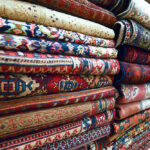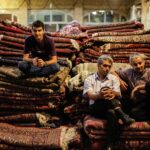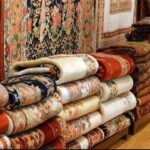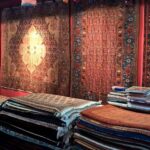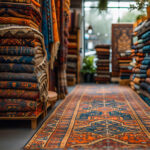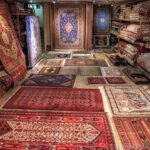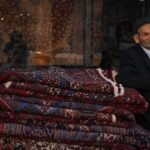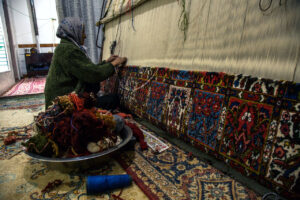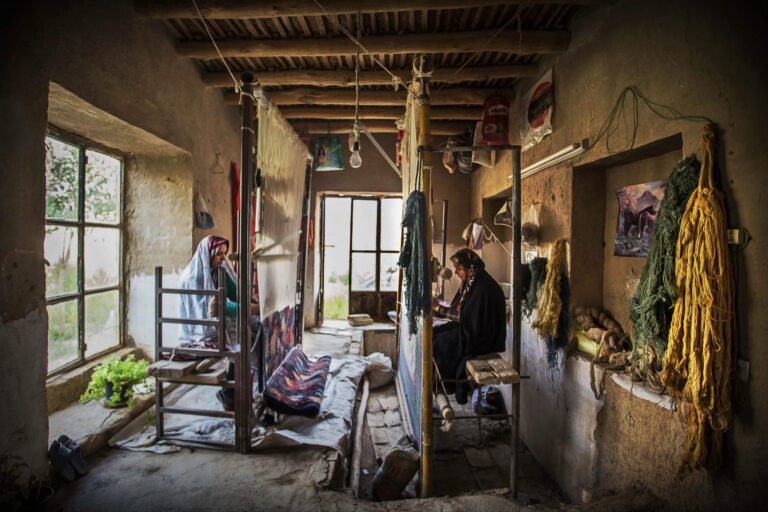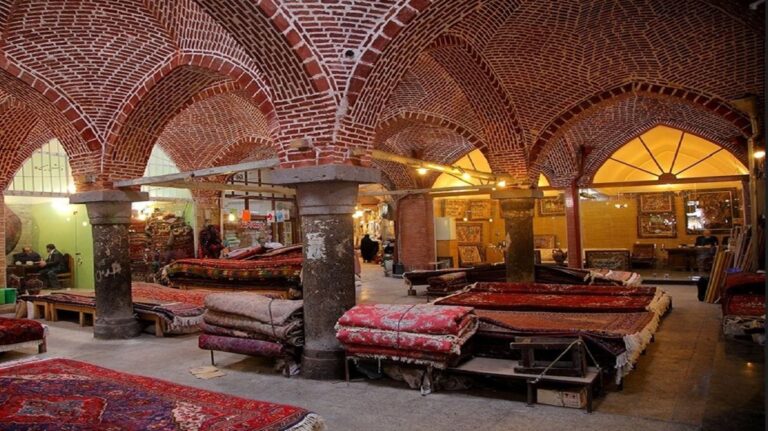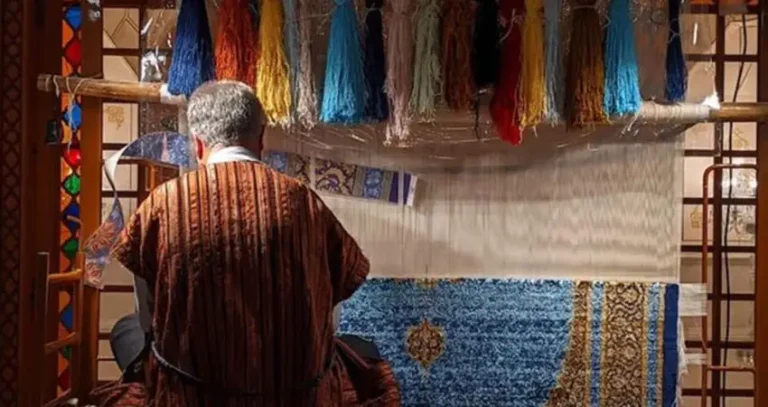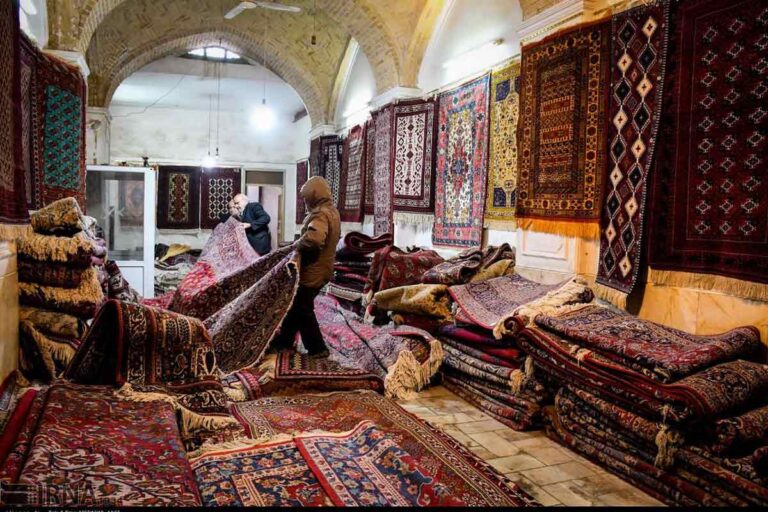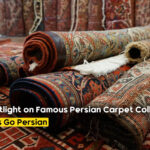
Spotlight on Famous Persian Carpet Collectors
Persian Carpet Color Palette Comparisons: Cultural Symbolism in Regional Persian Rug Designs
Persian carpets and rugs are far more than decorative floor coverings; they are storied artworks woven from centuries of cultural heritage, regional aesthetics, and masterful techniques. Each city in Iran imparts its unique narrative, whether through the intricate geometry of a carpet or the fluid elegance of a rug. In this blog post, we explore the regional design characteristics of Persian textiles, taking you on a journey through cities such as Tabriz, Kashan, Nain, Qom, Isfahan, Kerman, Ardabil, Qazvin, Shiraz, Yazd, and Sanandaj.
Tabriz Carpets: Geometric Precision and Timeless Craftsmanship
Overview:
Tabriz is one of Iran’s foremost centers for carpet production, renowned for its intricate craftsmanship and strong geometric language. Tabriz carpets have long been cherished for both their durability and their stunning visual appeal.
Key Characteristics:
-
Intricate Geometric Patterns: Repeating shapes and symmetrical motifs echo ancient Persian art and Islamic geometry.
-
Bold Color Palettes: Deep reds, blues, and earth tones evoke a robust aesthetic and historical resonance.
-
Complex Weaving Techniques: High knot densities and detailed patterns attest to a long legacy of technical expertise.
Cultural Significance:
Tabriz carpets serve as cultural documents that preserve regional myths, stories, and traditions, making each piece a timeless artifact.
Kashan Rugs: Elegant Flourishes and Delicate Detailing
Overview:
Kashan is celebrated for its refined textile artistry, where the natural beauty of local gardens and architecture inspires elegant rug designs.
Key Characteristics:
-
Delicate Floral Motifs: Intricate floral patterns, inspired by abundant gardens, lend a graceful, refined air.
-
Harmonious Compositions: Fluid designs reflect a balanced mix of architectural splendor and natural aesthetics.
-
Subtle Color Play: Soft pastels and gentle contrasts create an atmosphere of understated sophistication.
Cultural Significance:
Kashan rugs are a metaphor for growth and beauty, embodying the region’s deep connection with nature and artistic tradition.
Nain Carpets: Minimalist Beauty and Refined Simplicity
Overview:
Nain is known for its minimalist approach to carpet design, emphasizing refined simplicity and serene elegance.
Key Characteristics:
-
Understated Elegance: Minimalist patterns focus on delicate motifs and clean lines.
-
Muted Color Schemes: Soft, subtle hues evoke calm and contemplative spaces.
-
Precision Weaving: Meticulous craftsmanship is evident in the clarity and balance of each pattern.
Cultural Significance:
Nain carpets exemplify how restraint in design can result in powerful, timeless beauty—a perfect complement to modern interiors seeking calm.
Qom Rugs: Sacred Geometry and Spiritual Narratives
Overview:
Qom, a center for religious scholarship and pilgrimage, imbues its rugs with profound spiritual symbolism and sacred geometric patterns.
Key Characteristics:
-
Sacred Geometry: Intricate geometric designs symbolize the infinite and divine, drawing on Islamic theological principles.
-
Mosaic Inspirations: Vivid details reminiscent of mosaic art add depth and narrative to each rug.
-
Symbolic Detailing: Calligraphic elements and ornate borders transform each piece into a visual meditation on faith.
Cultural Significance:
Qom rugs are more than decorative items; they are meditative tools that bridge the earthly with the transcendent, reflecting the city’s deep spiritual heritage.
Isfahan Carpets: Artistic Flourish and Architectural Harmony
Overview:
Isfahan’s rich history and architectural splendor are beautifully reflected in its carpet designs, which exude artistic flair and intricate detailing.
Key Characteristics:
-
Ornamental Patterns: A blend of floral and curvilinear designs mirrors the intricate carvings and mosaics found in Isfahan’s historic sites.
-
Vibrant Color Schemes: A diverse palette—from bold hues to delicate pastels—captures the city’s dynamic artistic spirit.
-
High Knot Density: The meticulous weaving techniques yield richly detailed patterns that stand as true works of art.
Cultural Significance:
Isfahan carpets are celebrated as masterpieces that blend art and architecture, embodying the cultural richness of one of Iran’s most historic cities.
Kerman Rugs: Rich Heritage and Exotic Influences
Overview:
Kerman is known for luxurious rug designs that combine traditional techniques with exotic influences, resulting in pieces that are both opulent and deeply storied.
Key Characteristics:
-
Diverse Motifs: Elaborate designs often incorporate floral, curvilinear, and even pictorial elements that tell stories of local legends.
-
Exotic Color Palettes: Vivid, sometimes contrasting colors create a dramatic visual impact.
-
Artisanal Weaving Techniques: Complex patterns and high levels of detail showcase the skill and creativity of Kerman’s artisans.
Cultural Significance:
Kerman rugs reflect the region’s historic importance along trade routes, incorporating cross-cultural influences that enrich their visual and symbolic narrative.
Ardabil Carpets: Legacy and Natural Inspirations
Overview:
Ardabil is synonymous with some of the most iconic Persian carpets, where natural beauty and historical narratives intertwine.
Key Characteristics:
-
Nature-Inspired Motifs: Patterns often draw inspiration from the natural surroundings—flora, fauna, and landscapes that evoke the region’s beauty.
-
Timeless Designs: Traditional layouts and balanced compositions have made Ardabil carpets legendary.
-
Subtle Color Nuances: Earthy tones and natural hues highlight the organic feel of each design.
Cultural Significance:
Ardabil carpets not only beautify a space but also serve as cultural heirlooms, carrying forward centuries-old traditions and artistic innovations.
Qazvin Rugs: Dynamic Patterns and Royal Influence
Overview:
Qazvin’s rich historical past and royal connections are vividly reflected in its rug designs, which combine robust patterns with refined artistry.
Key Characteristics:
-
Dynamic Patterns: Qazvin rugs are known for their lively, intricate designs that combine both traditional and innovative motifs.
-
Regal Color Schemes: Deep, royal hues intermingle with softer accents, lending an air of elegance and grandeur.
-
Innovative Weaving Techniques: Artisans from Qazvin have long experimented with design, resulting in rugs that are both classic and uniquely modern.
Cultural Significance:
These rugs echo the splendor of Qazvin’s past as a royal center, making them treasured pieces in both historical and contemporary collections.
Shiraz Carpets: Bold Designs and Poetic Sensibilities
Overview:
Shiraz, celebrated for its poetic and cultural legacy, imparts bold and expressive elements into its carpet designs.
Key Characteristics:
-
Expressive Motifs: Shiraz carpets often feature bold patterns that reflect the lyrical and dramatic spirit of the region.
-
Vivid Color Play: Strong, contrasting colors give these carpets a dynamic and captivating presence.
-
Rich Detailing: Each design element, from central medallions to intricate borders, is crafted with attention to detail and artistic expression.
Cultural Significance:
Shiraz carpets are akin to visual poetry, capturing the vibrant cultural narratives and artistic passion that define this storied city.
Yazd Rugs: Desert Elegance and Intricate Weaves
Overview:
Yazd, with its distinctive desert landscapes and ancient architecture, offers rugs that mirror its unique environment and refined artistic traditions.
Key Characteristics:
-
Desert-Inspired Designs: Patterns often evoke the stark beauty and subtle textures of the desert, with an emphasis on symmetry and balance.
-
Elegant Color Schemes: Muted yet warm hues reflect the sun-drenched ambiance of Yazd’s historical quarters.
-
Delicate Weaving: The attention to detail in each pattern speaks to the city’s longstanding tradition of meticulous craftsmanship.
Cultural Significance:
Yazd rugs embody the fusion of nature and art, capturing the essence of a city where every grain of sand tells a story of resilience and timeless beauty.
Sanandaj Rugs: Ethnic Patterns and Vibrant Storytelling
Overview:
Sanandaj, known for its rich Kurdish heritage, offers rug designs that burst with vibrant patterns and deep cultural symbolism.
Key Characteristics:
-
Ethnic Motifs: Designs often feature bold, dynamic patterns that highlight the rich folklore and traditions of the Kurdish people.
-
Vibrant Color Schemes: Intense colors and contrasting shades create a lively, energetic aesthetic.
-
Artistic Narratives: Every rug tells a story through its intricate designs, serving as a canvas for regional myths, histories, and cultural identity.
Cultural Significance:
Sanandaj rugs are celebrated for their expressive power and cultural depth, making them prized possessions for collectors and cultural enthusiasts alike.
Weaving the Threads Together
The diversity of Persian carpets and rugs is a testament to Iran’s rich cultural mosaic. From the geometric precision of Tabriz carpets and the floral elegance of Kashan rugs to the minimalist charm of Nain carpets and the spiritual depth of Qom rugs, each region contributes a unique narrative to the heritage of Persian textile art. Isfahan’s artistic flourish, Kerman’s exotic influences, Ardabil’s nature-inspired legacies, Qazvin’s regal dynamism, Shiraz’s poetic designs, Yazd’s desert elegance, and Sanandaj’s vibrant ethnic patterns all weave together to form an enduring tapestry of creativity and tradition.
These regional textiles are more than mere decorative pieces; they are living histories that bridge the past with the present. They offer insights into local traditions, artistic innovations, and the cultural ethos of their respective cities. Whether you are a collector, an interior designer, or simply an admirer of fine art, the rich stories embedded in these carpets and rugs will continue to inspire and captivate for generations to come.
Embrace this journey through Iran’s artistic cities and discover how each piece is a woven narrative—an intricate dialogue of art, history, and culture that transcends time.



